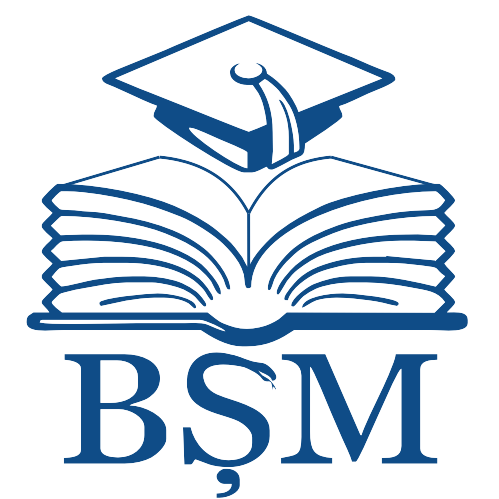|
|
- IRMS - Nicolae Testemitanu SUMPh
- 1. COLECȚIA INSTITUȚIONALĂ
- MATERIALE ALE CONFERINȚELOR ȘTIINȚIFICE
- „Cells and tissues transplantation. Actualities and perspectives. The 3rd edition” dedicated to the 80th anniversary of the founding of Nicolae Testemitanu State University of Medicine and Pharmacy. Chisinau, March 21-22, 2025
- The Materials of the National Scientific Conference with International Participation „Cells and tissues transplantation. Actualities and perspectives. The 3rd edition” dedicated to the 80th anniversary of the founding of Nicolae Testemitanu State University of Medicine and Pharmacy. Chisinau, March 21-22, 2025: [Abstracts]
Please use this identifier to cite or link to this item:
http://hdl.handle.net/20.500.12710/30430
| Title: | The role of glycation processes in aging |
| Authors: | Ghinda, Daniela
Sardari, Veronica |
| Keywords: | glycation;advanced glycation end product;oxidative stress;receptor for AGE;inflammation;aging;mitochondrial dysfunction;protein crosslinking;anti-aging strategies |
| Issue Date: | 2025 |
| Publisher: | CEP Medicina |
| Citation: | GHINDA, Daniela and Veronica SARDARI. The role of glycation processes in aging. In: Cells and tissues transplantation. Actualities and perspectives. The 3rd edition : The Materials of the National Scientific Conference with international participation dedicated to the 80th anniversary of the founding of Nicolae Testemitanu State University of Medicine and Pharmacy. Chisinau, March 21-22, 2025: [abstracts]. Chişinău: CEP Medicina, 2025, p. 89. ISBN 978-9975-82-413-2. |
| Abstract: | Background. Glycation is a non-enzymatic reaction in which reducing sugars react with free amino
groups in proteins, lipids, or nucleic acids, leading to the formation of advanced glycation end products
(AGEs). AGE accumulation leads to structural and functional alterations in proteins, contributing to
aging.
Objective of the study. To elucidate the biochemical mechanisms of glycation, its impact on aging,
and potential therapeutic strategies to mitigate its effects.
Materials and methods. A literature review covering the years 2019–2024 was conducted, analyzing
15 peer-reviewed articles from PubMed, ScienceDirect, Wiley Online Library, and MDPI.
Results. The glycation process begins when a reducing sugar, such as glucose or fructose, reacts with
the free amino group of lysine or arginine residues in proteins. Over time, these intermediate
compounds undergo glycoxidation and dehydration, forming irreversible AGEs such as Nε-
(carboxymethyl)lysine, pentosidine, and pyrraline. AGEs interact with the receptor for advanced
glycation end products (RAGE), a transmembrane receptor highly expressed in endothelial cells,
macrophages, and neurons. AGE-RAGE binding triggers activation of nuclear factor kappa b (NF-κB),
a transcription factor that upregulates the expression of pro-inflammatory cytokines such as TNF-α,
IL-6, and IL-1β, promoting chronic inflammation and cellular dysfunction. Mitochondrial dysfunction
is exacerbated by AGEs through oxidative phosphorylation impairment, increasing reactive oxygen
species (ROS) production. This oxidative stress further amplifies AGE formation in a vicious cycle,
accelerating cellular senescence via activation of the p53/p21 and p16INK4a pathways. Additionally,
glycation disrupts the ubiquitin-proteasome system and autophagy, preventing the clearance of
damaged proteins and contributing to intracellular toxicity. Therapeutic strategies to counteract
glycation include AGE inhibitors (aminoguanidine, pyridoxamine), RAGE antagonists, and
antioxidants (vitamin C, resveratrol, polyphenols), which scavenge ROS and reduce AGE formation.
Dietary interventions, such as caloric restriction and a low-glycemic diet, have also been shown to
limit AGE accumulation and mitigate aging-related damage.
Conclusions. Glycation is a key driver of aging through its impact on protein function, oxidative stress,
and chronic inflammation. Understanding the biochemical processes underlying glycation opens
avenues for therapeutic interventions aimed at reducing AGE accumulation and mitigating age-related
diseases. |
| metadata.dc.relation.ispartof: | Cells and tissues transplantation. Actualities and perspectives. The 3-rd edition. Chisinau, March 21-22, 2025 |
| URI: | https://repository.usmf.md/handle/20.500.12710/30430 |
| ISBN: | 978-9975-82-413-2 |
| Appears in Collections: | The Materials of the National Scientific Conference with International Participation „Cells and tissues transplantation. Actualities and perspectives. The 3rd edition” dedicated to the 80th anniversary of the founding of Nicolae Testemitanu State University of Medicine and Pharmacy. Chisinau, March 21-22, 2025: [Abstracts]
|
Items in DSpace are protected by copyright, with all rights reserved, unless otherwise indicated.
|


